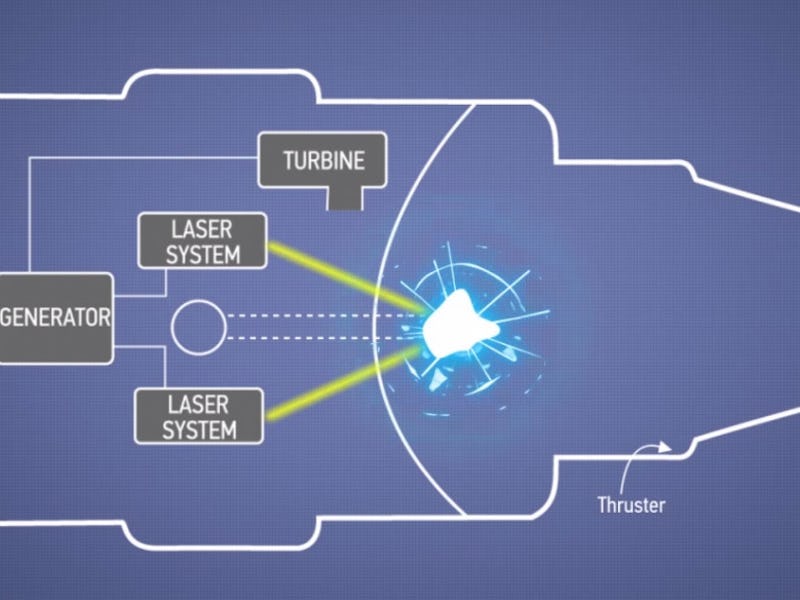Boeing Wants Combine Lasers With Fusion-Fission Power for a Jet Propulsion System
It's actually more insane than it sounds.

Last week, Boeing received a patent for a laser-powered propulsion system that would, presumably, replace rocket and turbofan engines in aircraft. The idea is to use a fusion-fission system combined with a turbine — all confined within the same space — to generate electricity and power an aircraft forward. It’s a crazy idea, and we’re all praying to the air gods that this is real.
Boeing’s plans call for an engine that contains a fusion chamber with several different strong lasers directed towards a single point: a hohlraum (pellet) containing a mix of special hydrogen isotopes). When the lasers converge at the pellet, the resulting implosion would cause all the hydrogen atoms to fuse. The gases produced from the fusion move through a nozzle at the back the engine to create thrust — resulting in what we know as jet propulsion.
But there’s more. A lot of fast neutrons would be moving through this engine. Boeing wants to coat the fusion chamber’s shield with fissionable material, which would result in a fission reaction (yep, like that.) A heat exchanger system would use the heat produced from this reaction to drive a turbine — which would produce electricity for, you guessed it, the lasers! Amidst all micro-explosions and bombastic physics, you have a method of renewable power. (This is where the hippies and the military lab rats join hands.)
As awesome as all this sounds, it’s incredibly farcical. That’s ignoring the fact that humans have to really master the processes behind fusion power. For those unfamiliar with what that means, just remember: the sun is a natural fusion reactor. So generating energy by nuclear fusion would mean doing something like that on a much smaller scale.
But even if Boeing can tame fusion power, there are still other problems to consider. Aircraft crash all the time, and having volatile radioactive material onboard would make any crash a thousand times more severe. And costs would undoubtedly make these plans even more a pipe dream than they already are.
More likely than not, Boeing’s patent lays out a design they know they have no realistic way of building, at least not in the near future. The company is probably just considering more novel propulsion methods and saw no harm in filing a patent for even the most eccentric ideas. It’s worth considering that if humans ever plan to leave Earth and travel outside of our own solar system, we’ll need mad-scientist plans like this to make it anywhere worthwhile.